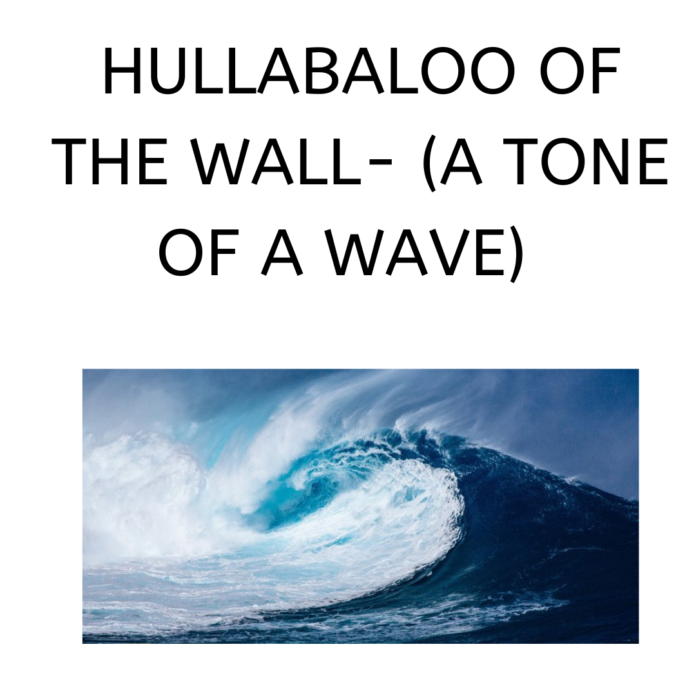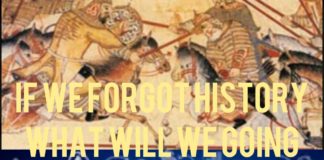The Charming Paradise, Sri Lanka is covered with a great protective wall given by Mother Nature as a gift. He rhythmically sprinkles his silver foam and captivates our hearts and plunders our eyes. Other than the protection, he riches our economy. As a great savior, he supports the livelihoods of many people. Even when enemy invasions occurred this wall protected all the creatures on the island. Also, he faced cyclones like natural disasters by taking all the hardships by himself. So all the people paid their homage and venerations to him. They appreciated him in the poems, as the husband of all the rivers who hug them at the end of the journey with much affection, love, and warm gentle care. This manifests that people believe that he can carry many responsibilities. But “is he so fruitful” “or is he a deceiver; to be respected by such people?” “Through his serene mood, why he made a large hullabaloo as a devil?”
“Who is this mysterious gift?” He is the Indian Ocean. Unfortunately, one calm morning he broke the boundary. He added a gloomy sign to our history. His strange hullabaloo which was unknown to Sri Lankans, made them be a reminiscence of the pain for years. He vanished the whole coastal belt within a very few minutes but its issues remained for many years. As our arrogance harmed nature’s inmates in the deep sea; the punishment boomeranged on us through a giant tidal wave. That made the whole island topsy turvy.
On 26th December 2004, remained a gloomy imagination in the hearts of Sri Lankans. Tsunami, a sudden, unexpected natural disaster that occurred for the first time in Sri Lanka and the civilians had not experienced it yet. So they hadn’t any precautions or safety methods to face the sudden disaster. As a result, the powerful giant tidal waves carried many innocents and hid them in the deep sea forever.
It was just a day after Christmas filled with festival jollity and the whole country life was relatively normal. People engaged in their daily activities and behaved in the most ordinary manner without knowing the lurking death behind them. The coastal belt was still giving the birth of a new sunrise. Nothing was unusual until 6.58 a.m.
Suddenly the sea displayed some strange behaviors. He created many bubbles. This conveys to us that the visual representation of the wave was totally a white image. ‘White’ suggests an inauspicious sign in the mythical world. However, people didn’t see anything remarkable or alarming. Suddenly the water level decreased. The fishermen considered as this was their luck, they collected the fish who were yearning the life in the sand. Suddenly their lechery of desires boomeranged on them like their poor fate. “Oh! The sea is coming in”, many people screamed. Those waves were giant and powerful. They came towards the land by representing his deceptive and evil nature. Many painful sounds were heard. The sky was covered with dust and foam. It created an eerie atmosphere irrespective of the peaceful rays sprinkled by the charming paradise.
It caused due to an earthquake with a magnitude of 9.1 occurred near Northern Sumatra by moving of the tectonic plates at the interface between the India and Burma plate. It was more powerful than the bomb explosion that took place in Hiroshima and Nagasaki.
The tidal waves engaged in their destructive process over a few minutes by gulping down many innocents. Those waves snatched away the mothers from children, children from parents, and many other strong bonds. Even today those who had lost loved ones regret psychological disorders.
Thousands of corpuscles remained everywhere while some slept in the deep sea forever. The tears and screaming sounds were burning this small paradise alive. There was no trace of an urban city in the coastal belt. Whole buildings vanished. As well as whole communication networks were disconnected.
People began to say, “Muhuda Goda Gahala. Mahasona avilla.” This means that they believed that was happened due to the arrival of “Mahasona”. This word is coming from the conventional and mythical stories of Sri Lanka. “Mahasona” is the demon of graveyards.
The helpers and rescue workers used their whole strength to find the escaped victims without considering their wealth, status, religion, and ethnicity. Hundreds of vans and trucks filled with dead bodies and victims flew towards the hospitals. Even though there were not enough facilities, doctors and nurses made their hearts powerful over the sensitivity. The ‘Humanity’ appeared all over the country.
Due to the highest death toll, mortuaries couldn’t bear any more. Many unknown dead bodies were collected in the pavements of hospitals with meager facilities. The sounds of mourning and crying pierced the surroundings.
Some people were slumped against pillars and some crouched on the floor with their heads in their hands. Then the bloody wounds, they had the pain of losing relationships.
The great deceiver, the sea was responsible for all those aspects. Many people became homeless. Those people were piled into trailers and tractors and carried to the safe places in the middle part of the island. Unfortunately, the whole coastal belt became a desert. No smiles were there and no peace remained.
The 2004 Tsunami-rail disaster is the largest single rail disaster in world history with the death toll of 1700 fatalities. The train was the ‘Queen of the sea’ and it was struck near the village of Telwatta as it traveled between Colombo and Galle.
The world of every mother is her children. Children are the bright light ray that illuminates their soul. So every mother becomes very sensitive towards her offspring. So how can she believe that her children will never come to enjoy her warmth, affection, and love? When the doctors shouted ‘does anyone know this child’; ‘does this child belong to anyone here? , Many mothers who were blinded with love and affection, quarreled with each other for children. Mothers’ hopes were dissolved in the tidal waves. Thus what is the worth of her monotonous life without a young smile?
As well as many orphanages were built for many orphans; especially for children. They were affected by mental stress and deep fear.
Even after some days, the odor of dead bodies was not disappeared. The tidal wave was a sudden unexpected disaster. The aspects of overpowering forces were reflected through the destruction caused to the surroundings and humans, damage to the land and the property. Many economic issues began to arise. As well the education, agriculture, tourism, and many other sectors were affected.
Tsunami made a red spot in our economy. Especially the worst side of this affected for our tourism industry. We had to rebuild the coastal belt by investing a very large amount of money. The people who engaged in self-employment such as making different ornaments and selling them the travelers around the coastal belt had to burn with hungry. Most fishermen lost their property such as boats and other equipment. Even those who settled in small thatched houses with their families near the sea became highly helpless. Ultimately we rebuilt the external attraction again, but we failed to rebuild the minds of people again. They were affected by psychological fear.
The agricultural sector was deadly affected by this sudden disaster. 2594 square meters of paddy lands were destroyed. As well as a large number of agricultural vehicles and types of equipment vanished. Many canals and drains were blocked and polluted. Even the underground water networks were totally became salinated.
Galle international stadium, the test match cricket ground at Galle were devasted and attractive underwater safari voyages of Hikkaduwa were destroyed. So it is obvious that this tidal wave stole our economically strengthened things.
Irrespective of the wealth or status everyone faced this situation equally. So without considering the class, caste, religion, and ethnicity everyone helped each other to be rigid again. Even many countries gave us aid.
The tsunami occurred as the Second Big Match after the Big Match of 1983; the Black July period. That was racial violence. Here this encounter was not such a conflict between two groups of ethnicities but was a moment of nature versus human. Even this conveyed to us that we are not the lord of nature but simply a part of it even we wish to dominate nature in a very ridiculous way through technological development by transforming natural theories. It is very sarcastic as we couldn’t do anything and had to face it with bare hands with a precious technology, as serpents who are crawling by seeing the waves.
There are many sources to obtain the experiences of the tidal wave. Through them, we can identify the deep transformation that took place in our country both physically and mentally.
The book called ‘Wave-A memoir of life after the Tsunami’ by Sonali Deraniyagala greatly describes the horrifying disaster experience. She faced Tsunami and lost her whole family on 24th December 2004. However, she is a symbol who represents the pain and mental agitation of thousands of victims.
On that day, Sonali and her family were holidaying in a hotel in Yala. They were the residents of the United Kingdom yet, but they didn’t forget to visit their aged parents in Sri Lanka. Tsunami stroked like thunder shattering their entire life.
In sudden disasters, people react to them in different ways. Sonali also played her role as a mother, as a daughter, as a wife, and as the closest friend.
At the first moment, Sonali couldn’t understand the unusual behavior of the sea. She thought that it was only a strange thing. But suddenly she felt a sigh of disaster although she didn’t know what that is. She grabbed her two sons and started to run. This manifests that Sonali understood the disaster by her mother’s instinct. But she forgot to inform her loving parents, one of the most valuable things in the world. Therefore this represents Sonali’s role as a mother and role as a daughter is really contrasted. As a mother her whole intention was to protect her children because she knows the great pain and tears and all the challenges she had faced when she gave birth to children. This illustrates that a mother’s love doesn’t change even in disasters. As a result, she forgot many other values.
When they were running a jeep driver stopped for them. He helped them wholeheartedly and came forward to rescue that family. Even he didn’t become egoistic to think that waiting for them will be a risk for getting rid of the disaster. So it is suggested that in such disastrous, helpless conditions some people come to rescue others’ lives. This conveys the great human values of society.
After some time Sonali recalled her parents. She regretted it a lot as she couldn’t inform them even they were in the next-door room. So this represents how people become guilty conscious over their loved ones in such a panic moment. This symbolizes the reality of human behaviors in such circumstances.
When the jeep driver stopped for Sonali’s closest friend, Orlantha’s family, unfortunately, her mother, Beulah lost her grip and fell down. Then Anton who was the husband of Beulah sacrificed his life by jumping out from the jeep. He didn’t have any sense to rescue his own life in a very selfish way. This manifests that the strong relationship between the husband and wife. This even displays how lovers face such minute situations.
Sonali’s gruesome description of the moment, the jeep turned over makes our eyes wet. Indirectly she suggests that the turned jeep actually turned her whole life. Her whole family was taken by the wave.
As well as she lost her parents and some of her friends at a millisecond. She had to bear the loss at the same time. There was no person who remained to share her feelings. How does she bear all those things? She had to suffer as a mother, as a daughter, as a wife, and as a friend at the same time. Although she is rescued, she has the feeling of a dead body. She has no hopes and hasn’t a beautiful future. So she tried to suicide many times. Even today she recalls it and regrets it a lot. As a mental treatment she was guided to write this book, but that vivid description of both external and internal human emotional responses make us feel as if we are reliving the experience.
The glimpses of human courage, human love, human weaknesses, and human sacrifice in a struggle with a massive, ruthless natural force are vividly revealed from the novel “Wave”. Sonali’s experiences symbolize the painful experiences of thousands of victims. It falls our country to deep mental agitation.
While synchronizing the above facts it is obvious that the sudden disaster, Tsunami which occurred the first time in Sri Lanka changed the incidents of our country. As a result, we had to be rigid again by proving that nature is beautiful, yet it can be ruthless at times.










